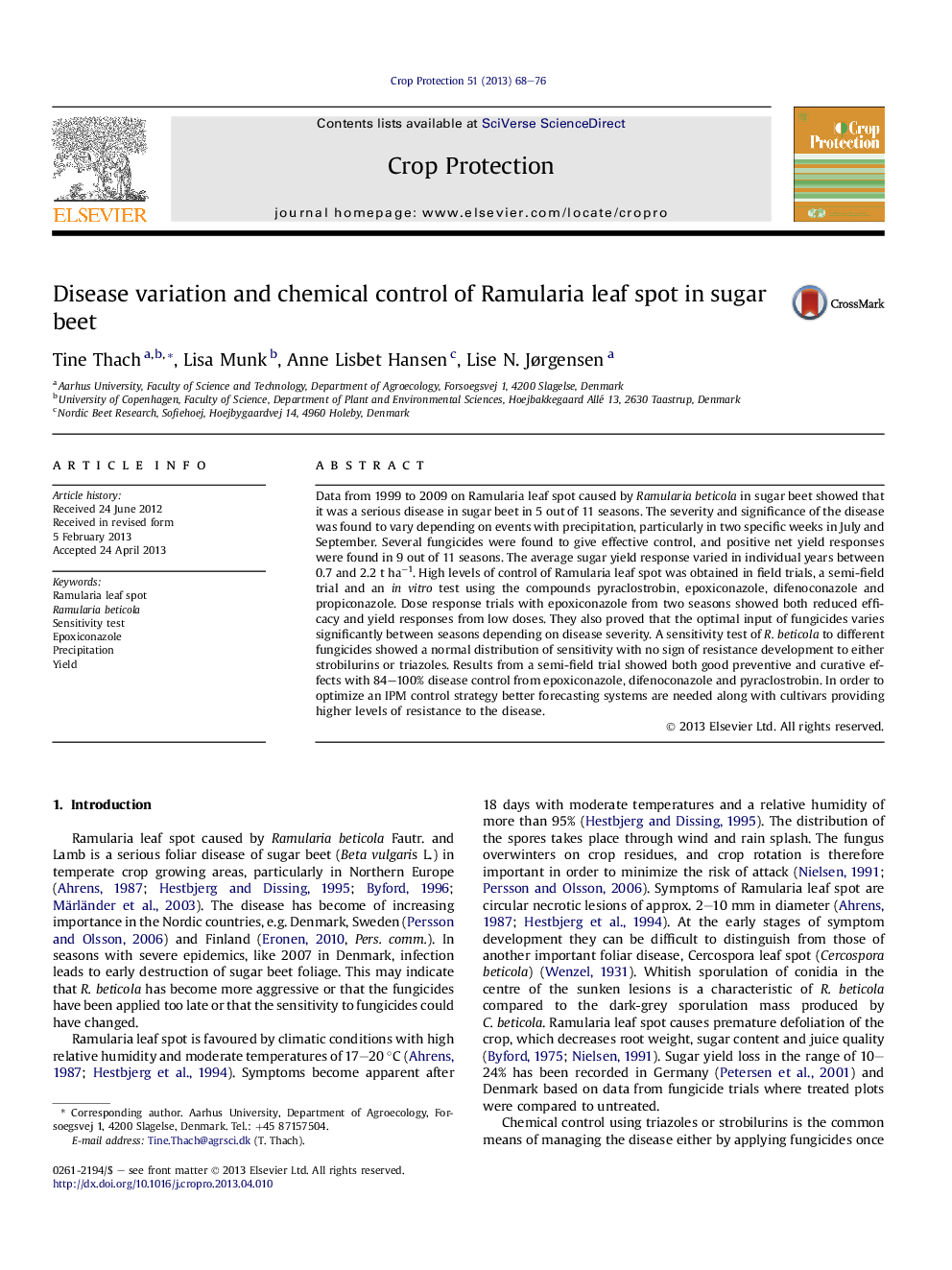| کد مقاله | کد نشریه | سال انتشار | مقاله انگلیسی | نسخه تمام متن |
|---|---|---|---|---|
| 4506072 | 1624336 | 2013 | 9 صفحه PDF | دانلود رایگان |

• Ramularia beticola in sugar beet cause serious disease in Denmark.
• Ramularia leaf spot severity varies depending on events with precipitation.
• Triazoles and strobilurins have shown effective control of Ramularia leaf spot.
• Disease control gave mean yield response between 0.7 and 2.2 t ha−1 over years.
• No signs of fungicide resistance were found for triazoles and strobilurin tested.
Data from 1999 to 2009 on Ramularia leaf spot caused by Ramularia beticola in sugar beet showed that it was a serious disease in sugar beet in 5 out of 11 seasons. The severity and significance of the disease was found to vary depending on events with precipitation, particularly in two specific weeks in July and September. Several fungicides were found to give effective control, and positive net yield responses were found in 9 out of 11 seasons. The average sugar yield response varied in individual years between 0.7 and 2.2 t ha−1. High levels of control of Ramularia leaf spot was obtained in field trials, a semi-field trial and an in vitro test using the compounds pyraclostrobin, epoxiconazole, difenoconazole and propiconazole. Dose response trials with epoxiconazole from two seasons showed both reduced efficacy and yield responses from low doses. They also proved that the optimal input of fungicides varies significantly between seasons depending on disease severity. A sensitivity test of R. beticola to different fungicides showed a normal distribution of sensitivity with no sign of resistance development to either strobilurins or triazoles. Results from a semi-field trial showed both good preventive and curative effects with 84–100% disease control from epoxiconazole, difenoconazole and pyraclostrobin. In order to optimize an IPM control strategy better forecasting systems are needed along with cultivars providing higher levels of resistance to the disease.
Journal: Crop Protection - Volume 51, September 2013, Pages 68–76